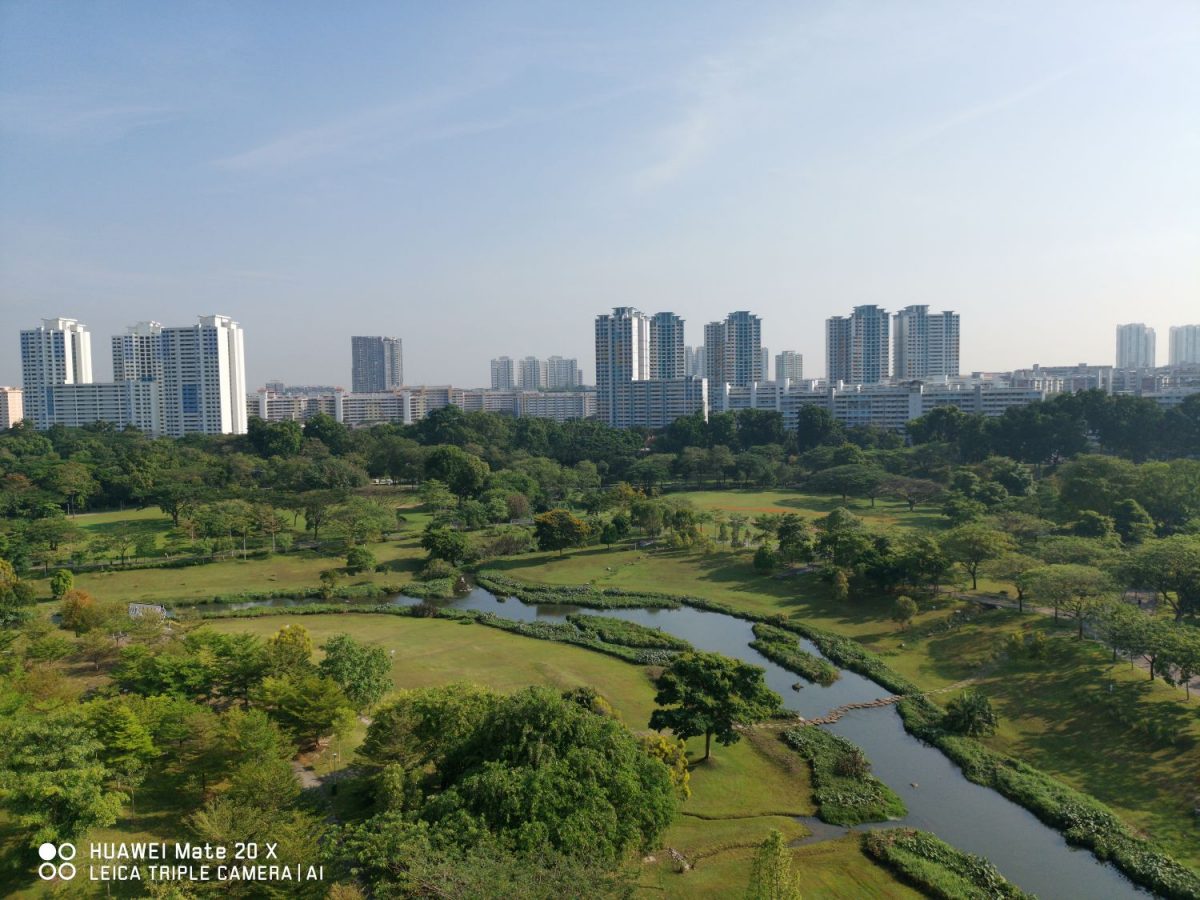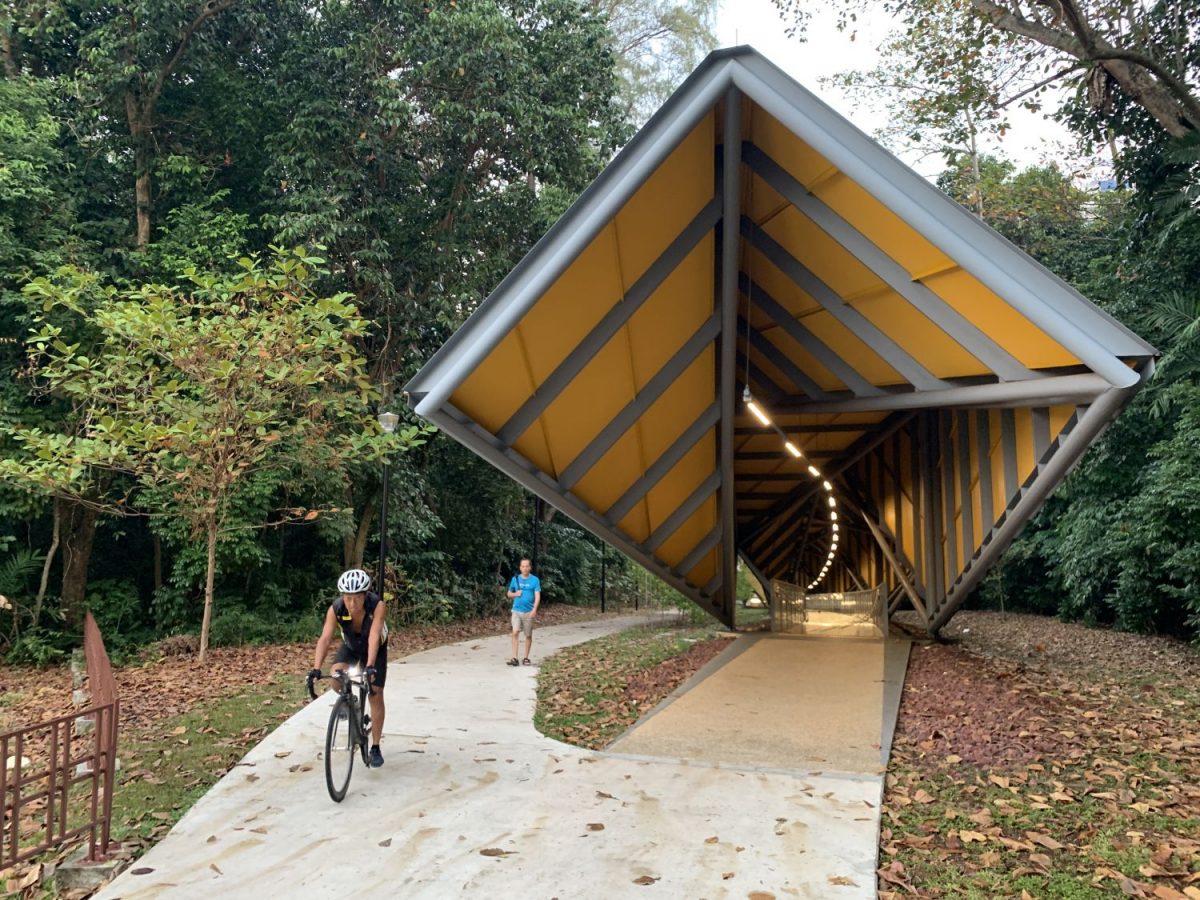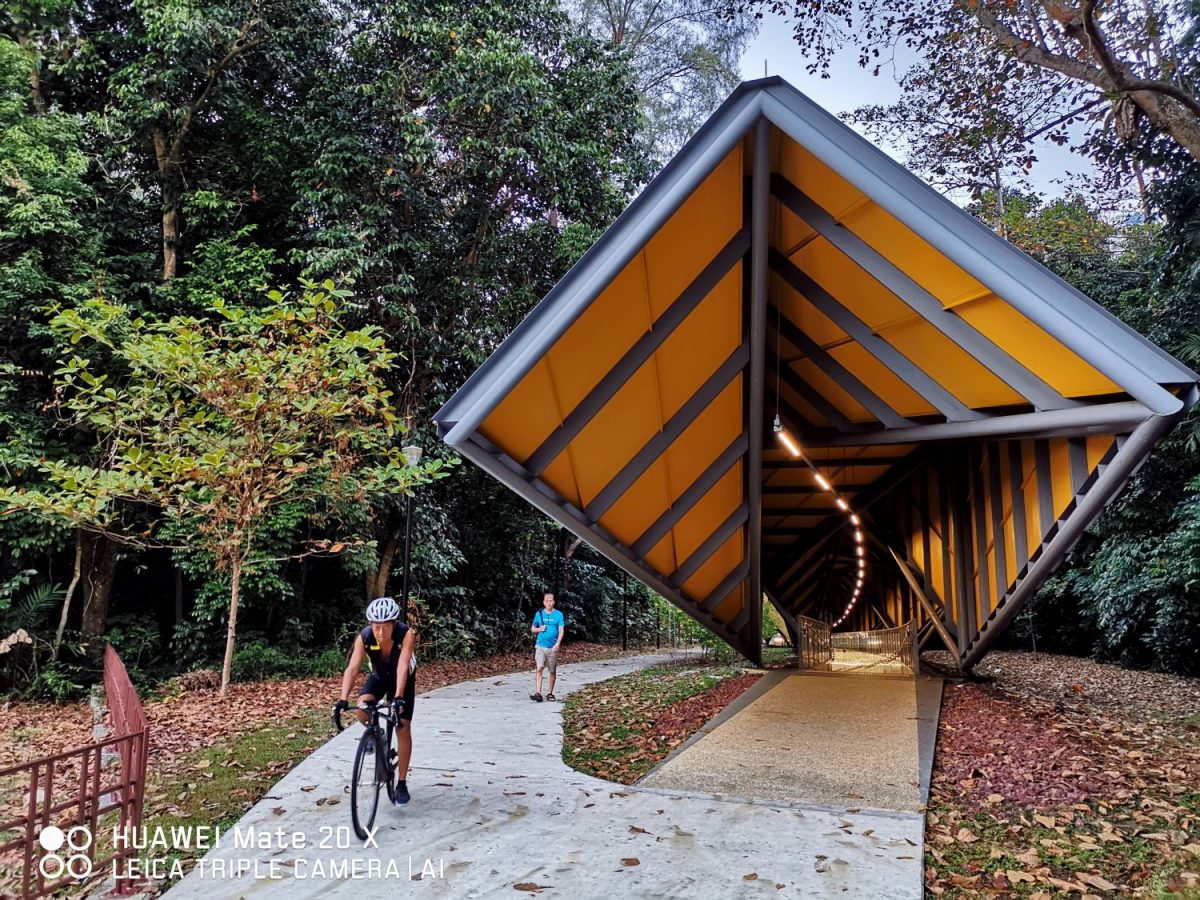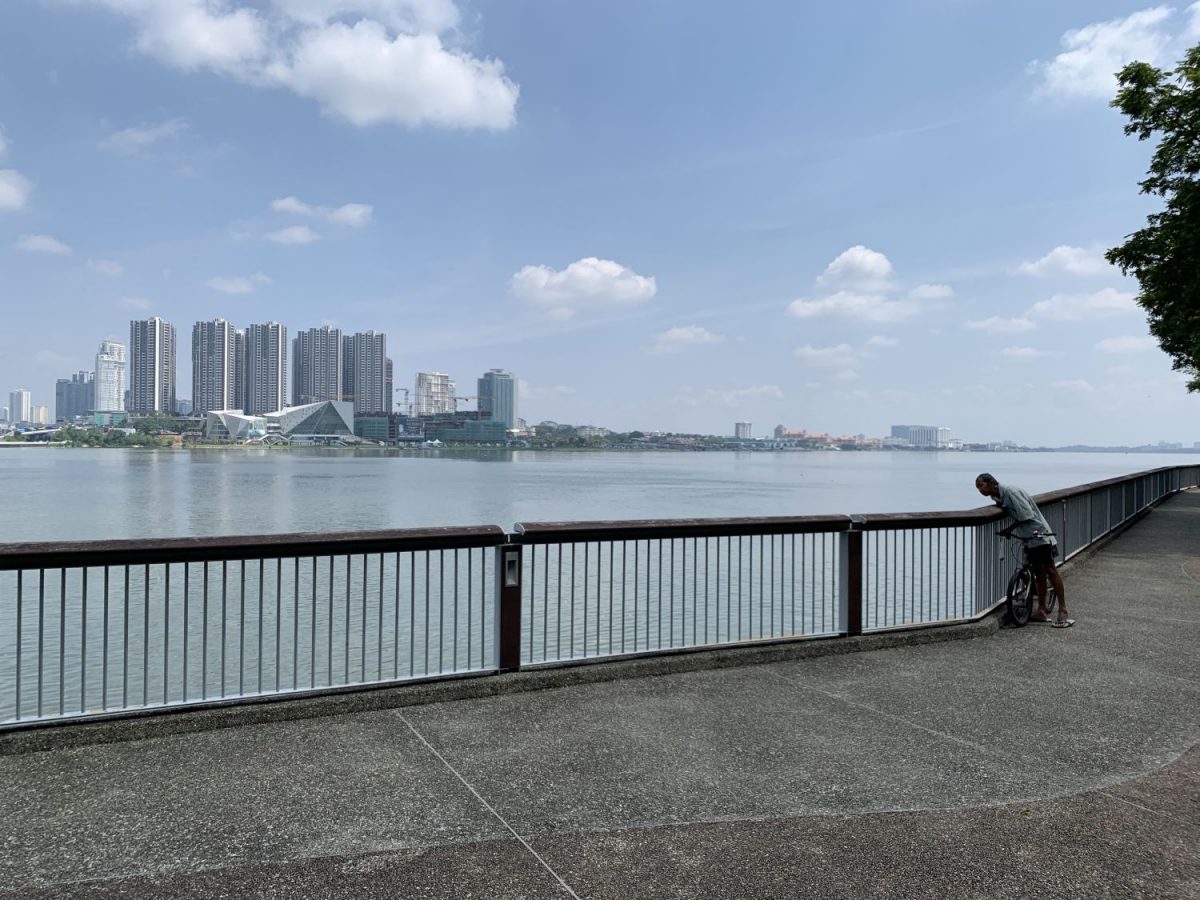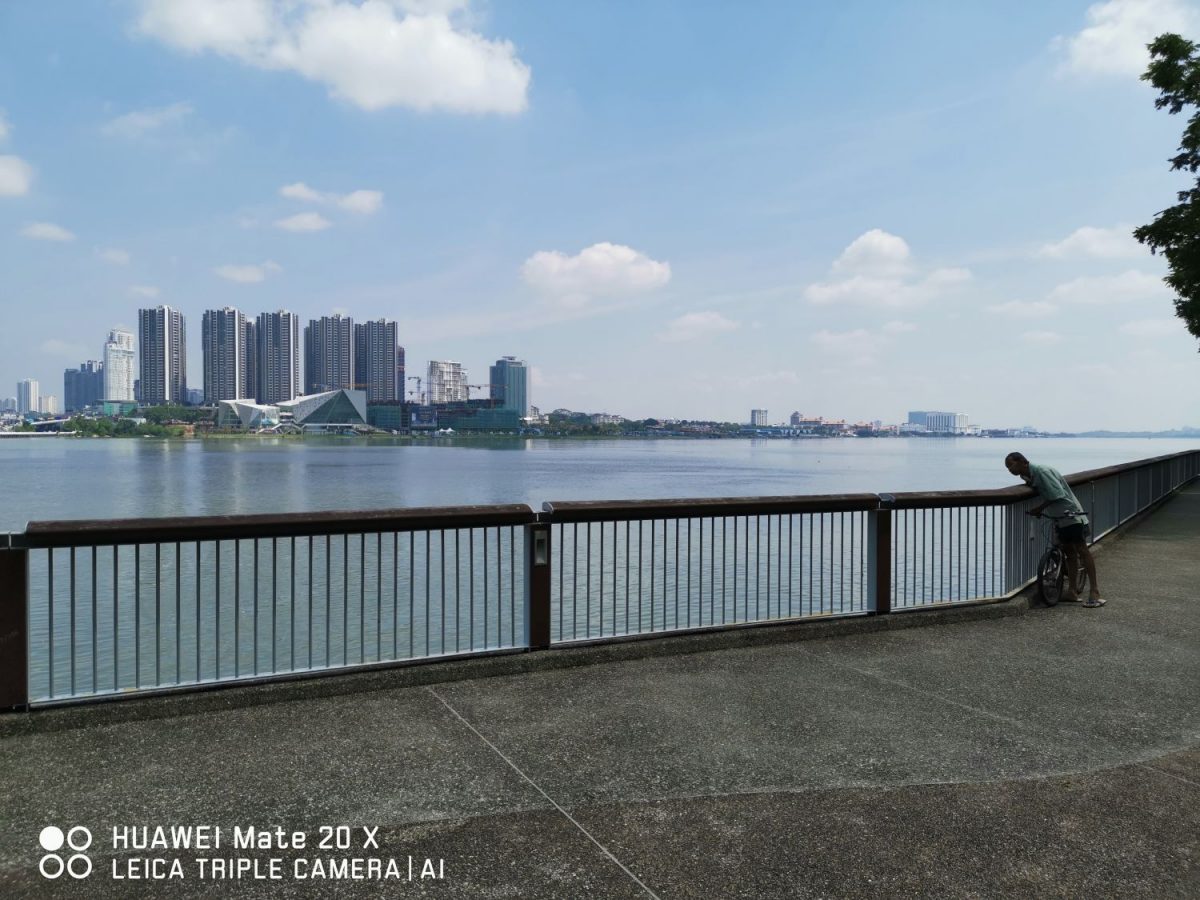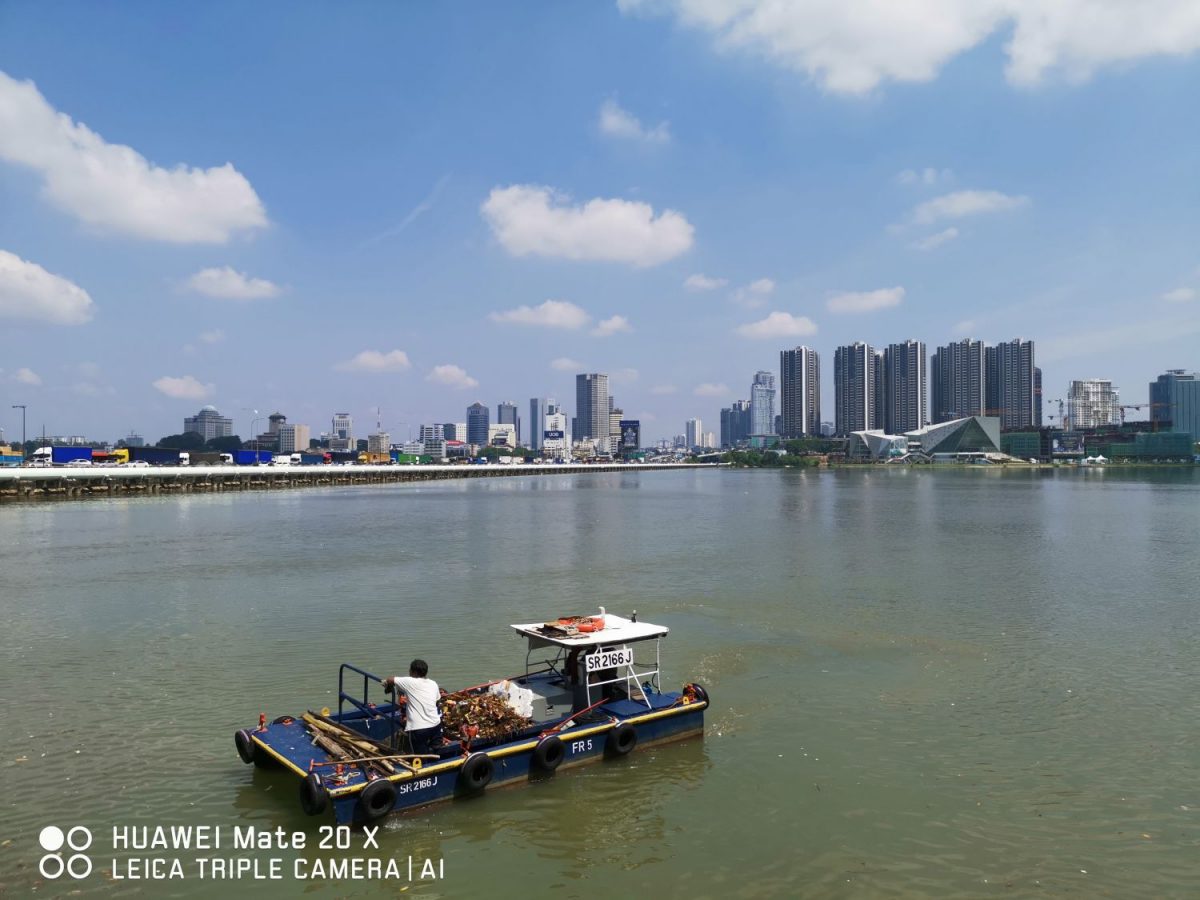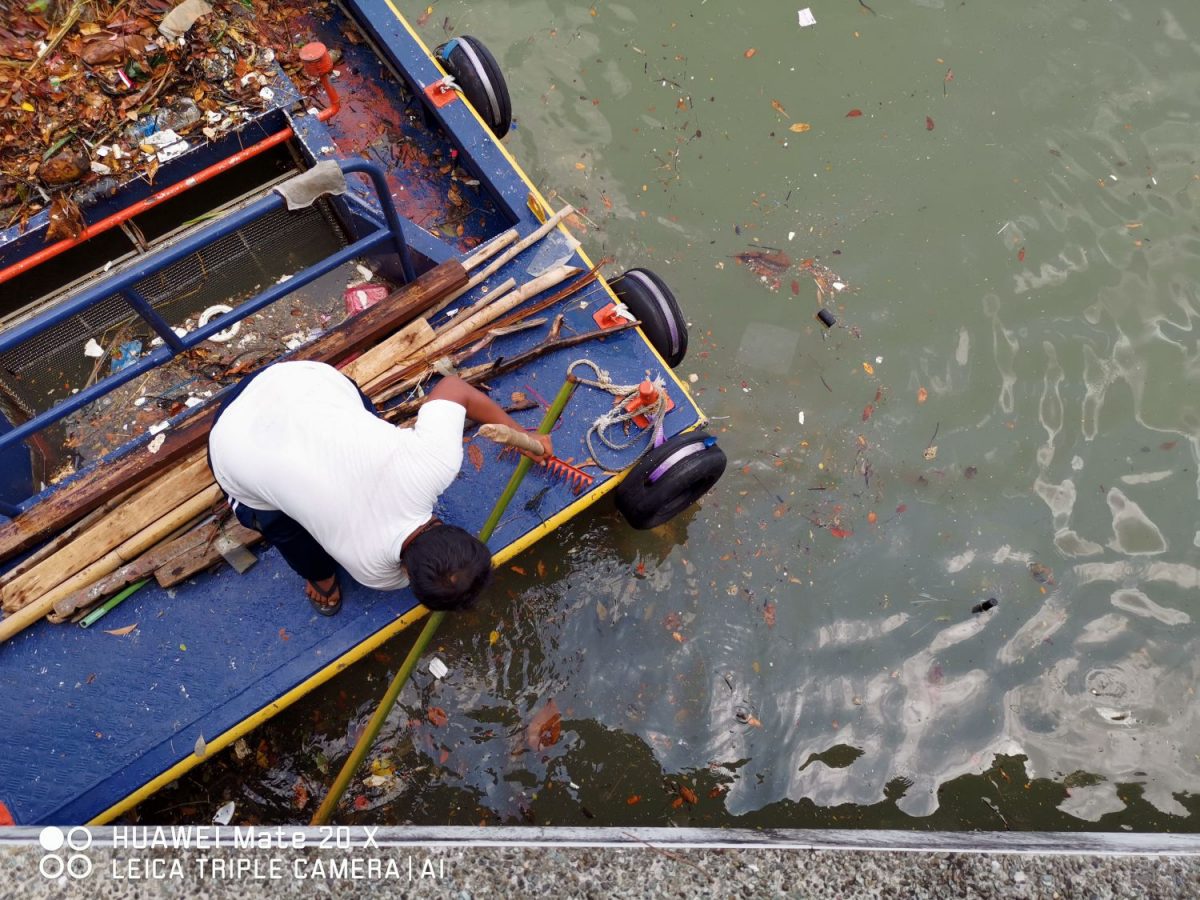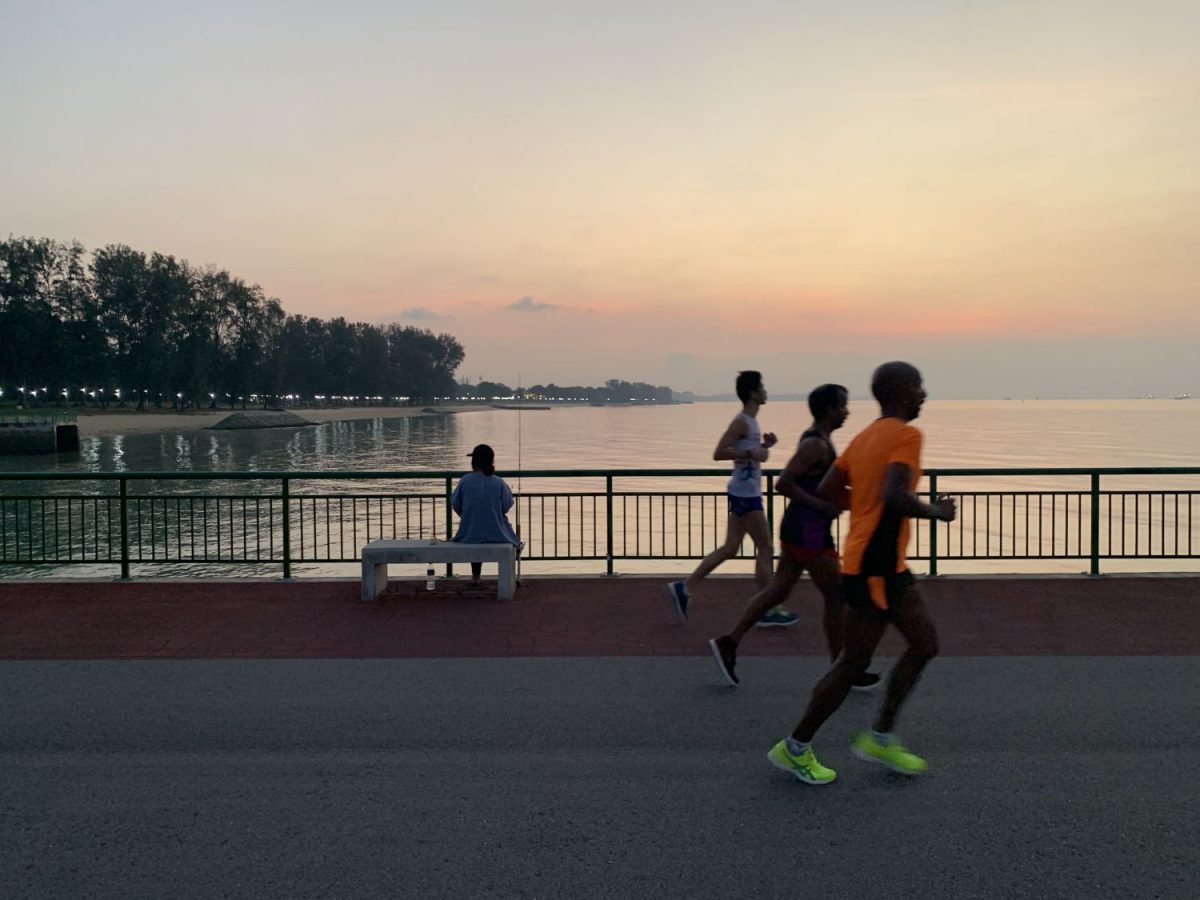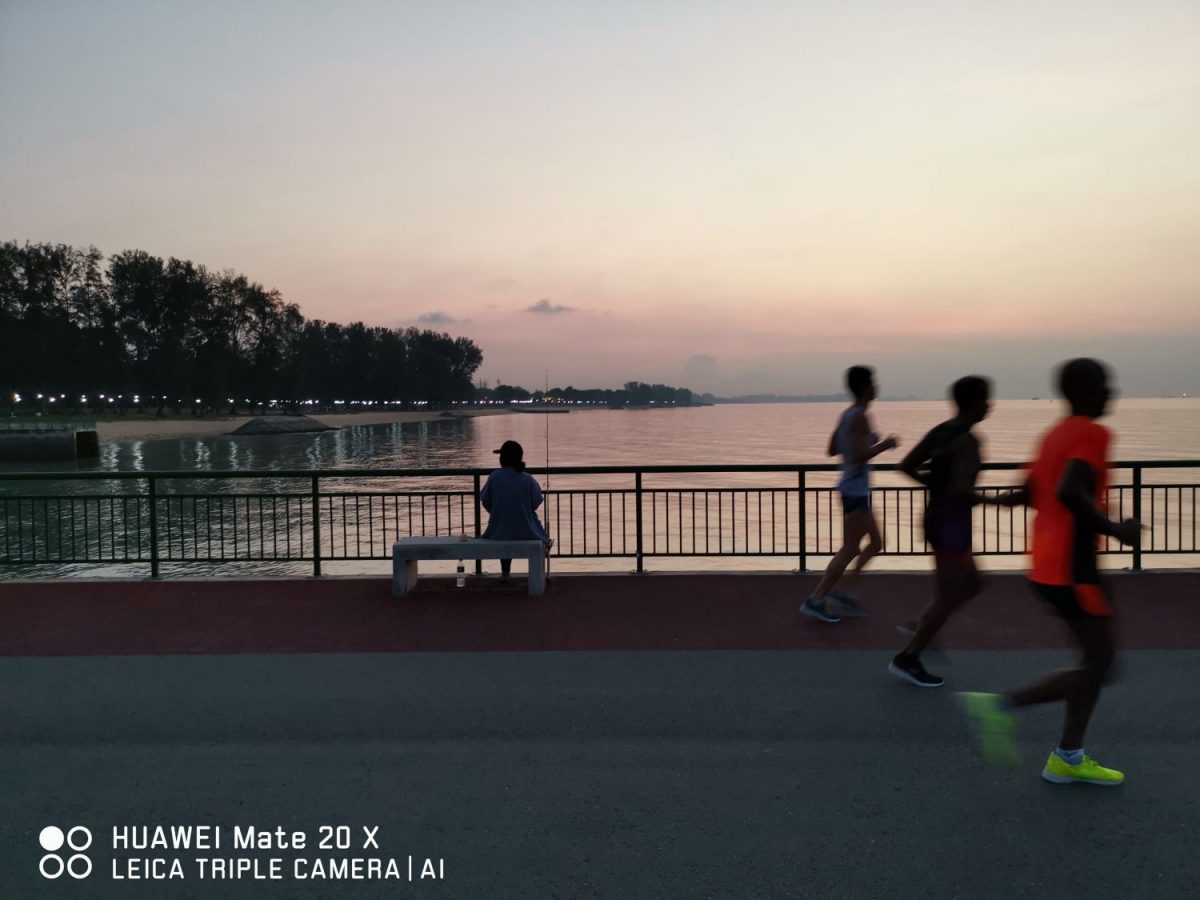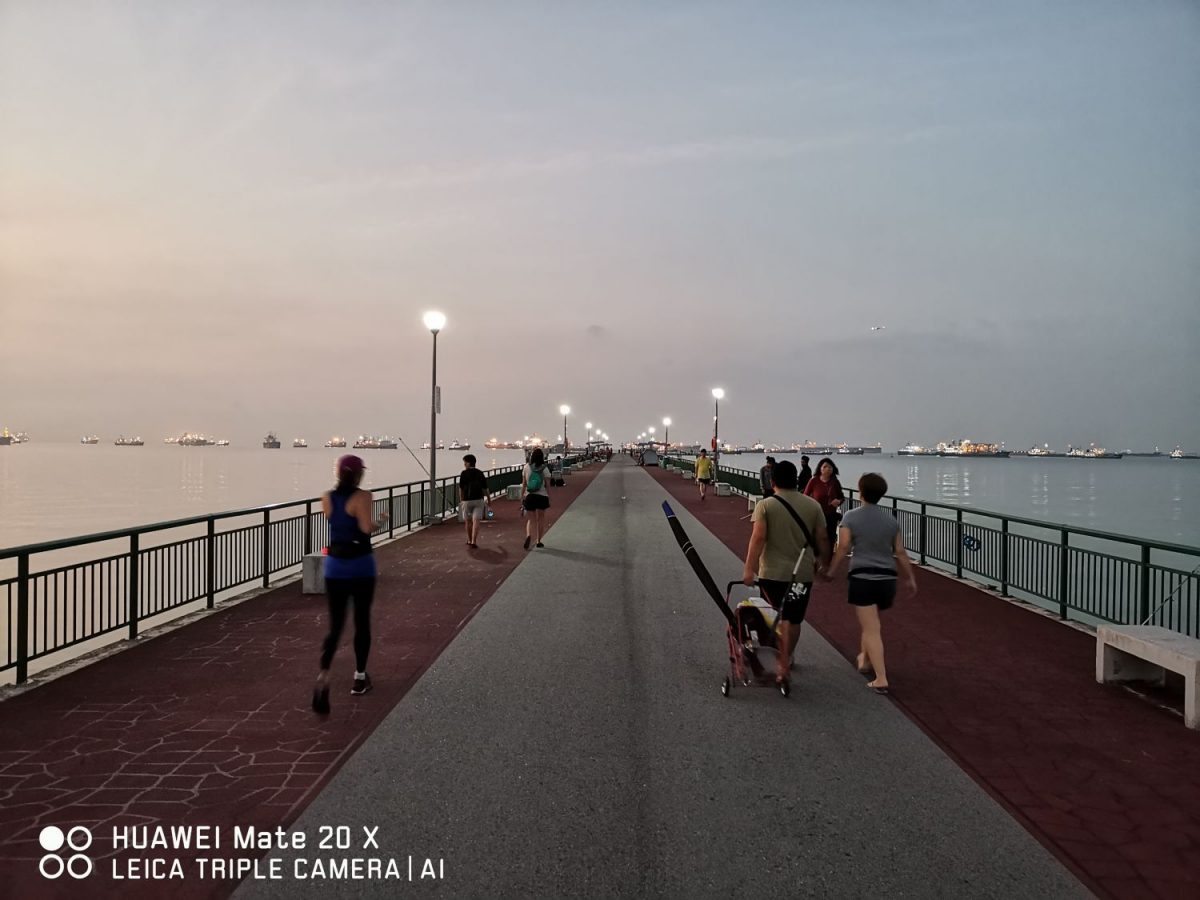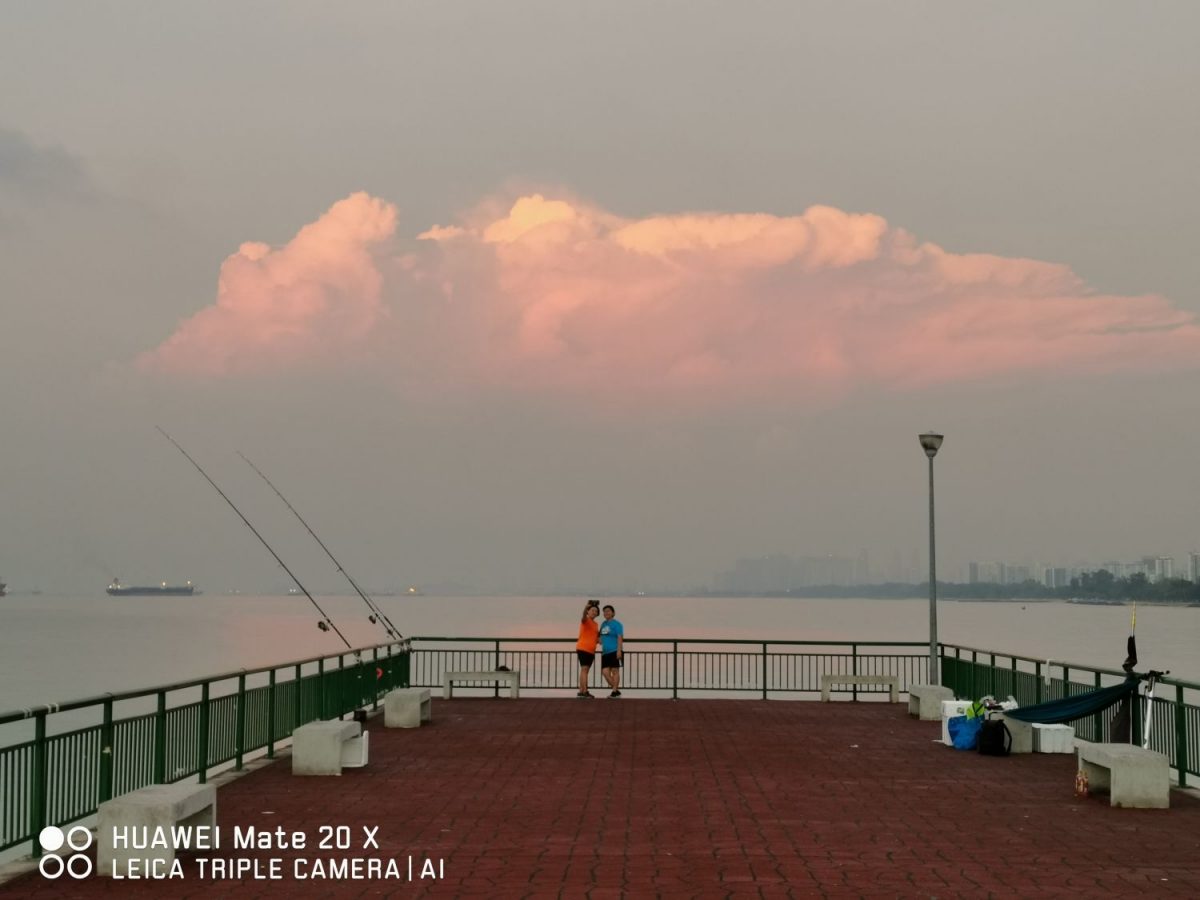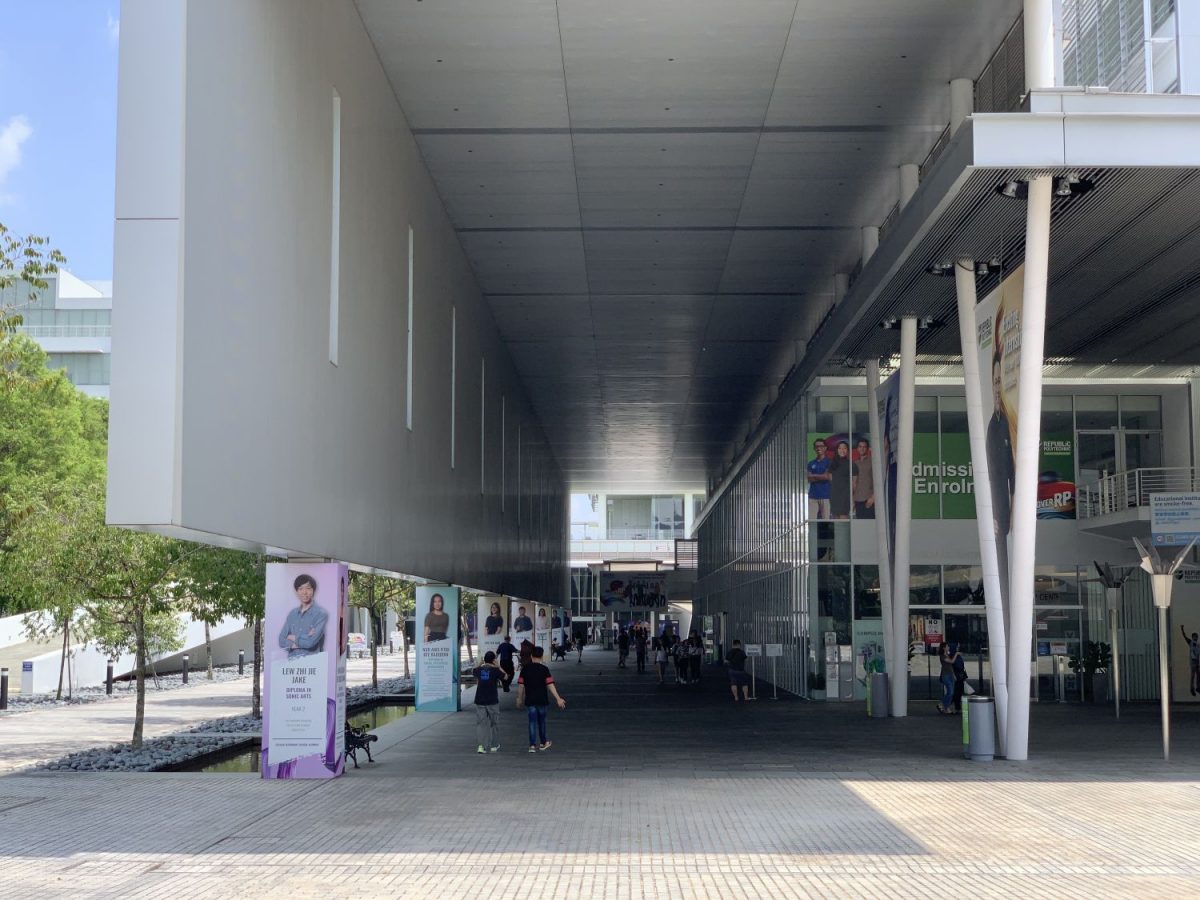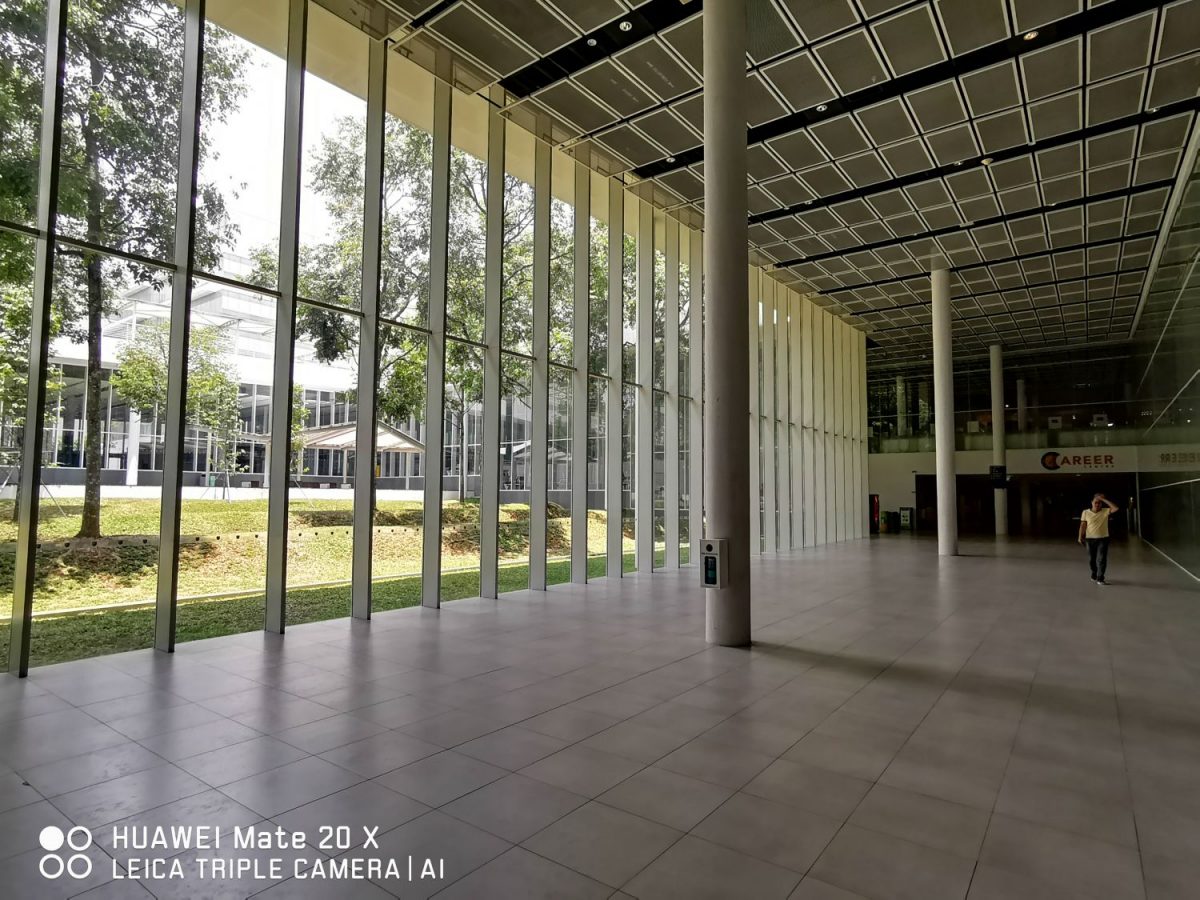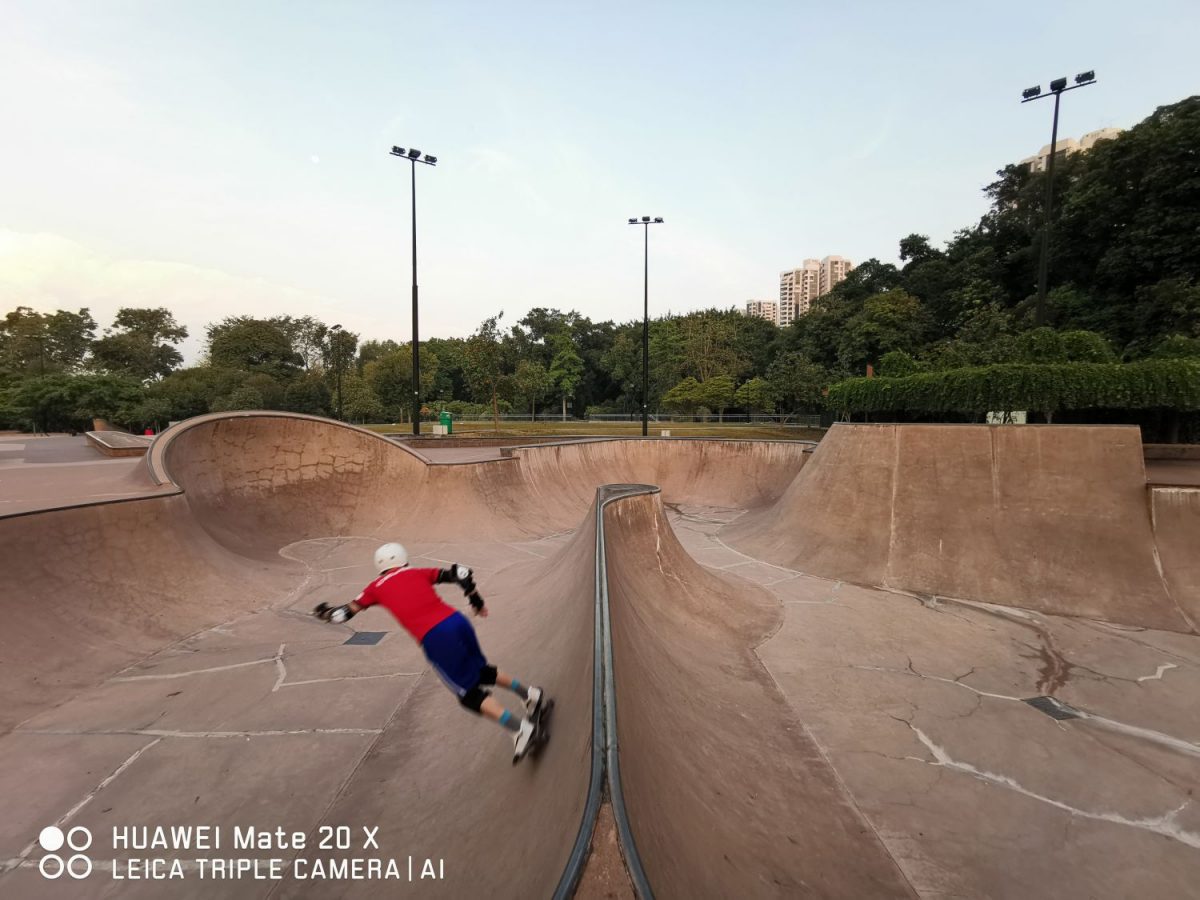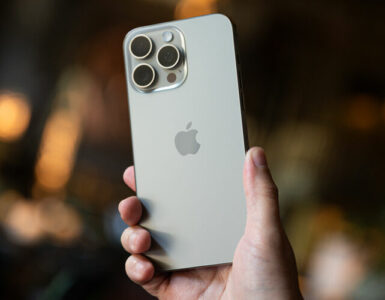With plenty of phones vying for the crown of best shooter, Android and iPhone users will invariably be exhorting the virtues of their favourite flagship phones, in a bid to make a case of their go-to device as top dog.
The iPhone has long had a tradition of photographic excellence, but what was once the undisputed king of mobile photography has, in recent years, had some stiff competition from not just one, but many of the latest Android devices.
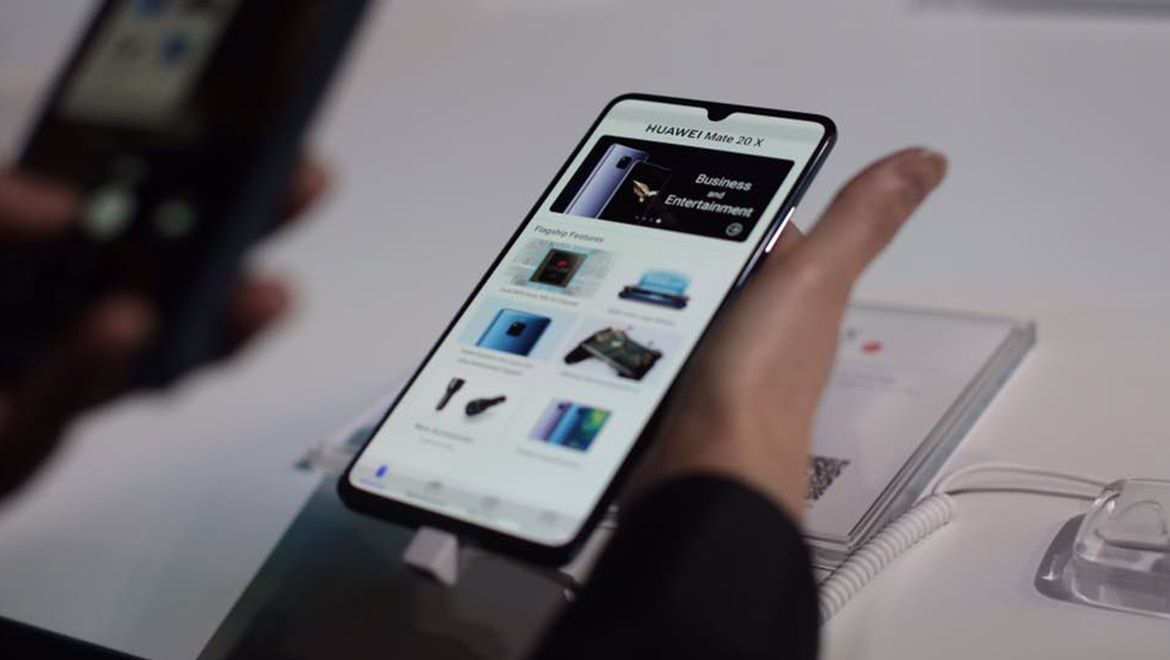
On the Android side, a handful of cameras tend to float to the top of the pool, with Huawei, Google and Samsung seemingly locked in a perpetual three-way battle for supremacy among Android handsets.
Just ahead of the impending Huawei P30 launch, we took the chance to pit one of the best Android cameras, the Huawei Mate 20 X against Apple’s flagship iPhone XS Max.

As most of you are aware, the Huawei Mate 20 series has several variants, namely the Mate 20, Mate 20 Pro and the Mate 20 X. For this test, we took the Mate 20 X (which has the exact same triple-camera module as the highly-touted Mate 20 Pro) to match it with Apple’s leading flagship. Before we get started with the photos, here’re some ground rules of how the shootout was conducted:
- Images on both phones were shot on auto mode. While there are many photographers out there who know how to take advantage of shooting RAW files, and on full manual mode, there are plenty more who are more comfortable turning on the camera and simply pressing the shutter button, so we wanted to see how these devices performed under those conditions.
- All photos were not touched-up using any editing software, and appear straight out of camera.
- Images on the Huawei were shot on the 10MP mode instead of the 40MP.
- iPhone images were shot at the default resolution with the Smart HDR function left on. Images were also saved in the JPEG format instead of HEIF format for better compatibility to view on screen.
- All the images were loaded onto a computer with a calibrated screen, and the images from both devices were viewed on the same screen to make up for discrepancies on the individual displays with each handsets.
- The highly touted AI mode on the Huawei was left to its own devices to choose which mode to shoot in as it saw fit. This Master AI is a feature that can be easily disabled, but the vast majority of Huawei users would leave it on, and trust the camera to make the best choice for them.
- The only mode we decided to try out, to mainly to show the difference in the two devices, was the Night Mode on the Huawei. In certain contrasty or low light situations, we turned on the night mode to see the difference it would make, compared to Apple’s HDR images.
- We also used the various lenses of the Huawei, usually at their pre set difference of x1 (standard), x0.6 (UltraWide), x3 (zoom) and x5 (longer zoom), as well as the iPhone’s x1 and x2 lens options.
- Lastly, this was a street photography shoot out, so we did not do much of a comparison with their portrait mode functions, which we were not really a fan of), or their macro functions (which were both kinda cool, but not really used in the genre of street to begin with).
So let’s get started!
01: Landscape of Bishan Park
At first look, the iPhone image has a cooler cast to it than the Mate 20 X. This was a bit of a surprise as the iPhone images tend to look warmer on the phone display during the shoot. The Mate 20 X pictures also turned out warmer on the computer screen, than when viewed on the phone. The Huawei images were also far sharper than those on the Apple.
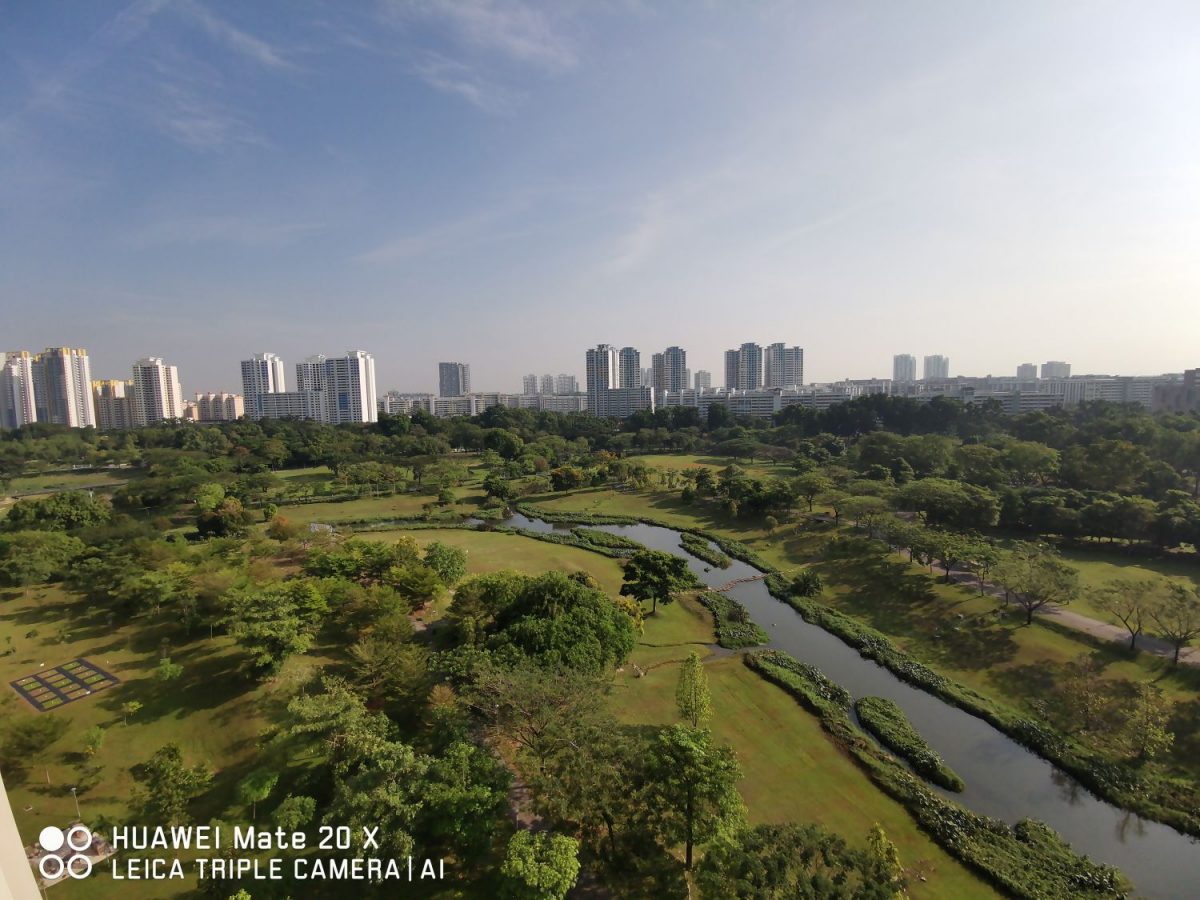
Images were both shot with the x1 lens, and we’ve thrown in one shot with the ultrawide angle, to see the alternative view it can offer. iPhone images display a tendency to have less Depth Of Field (DOF) than expected, which is a recurring effect we observed across several pictures.
WINNER: Huawei Mate 20 X
02: Foliage on East Coast Park
The Mate 20 X shot turned out way sharper than the iPhone, so much so that it ended up looking rather unnatural. The AI defaulted to Greenery mode and coupled with aggressive in camera sharpening, made the underpass look good but the natural foliage behind was less lifelike.
On the flipside the iPhone image seemed to again exhibit a shallower DOF, with the tree on the left and the middle of the underpass being sharp as tack, but the foreground and background fading off into a slight blur, even if colours were more natural. Both images had good and bad qualities and honestly, the best image would have had Huawei’s sharpness of the underpass and the iPhone’s colour of the leaves.
WINNER: Neither
03: Overlooking Malaysia
There is something off about the iPhone shot. The left hand side of the image seem sharp (both the buildings in the background, and the pebbles in the foreground), but the picture gets progressively out of focus towards the right side of the image (though the foreground stays sharp throughout). Granted, this will look very different on the iPhone’s screen compared to being splashed out on a 4K monitor, but when viewed on a large screen, the image is jarring.
Overall, exposure on the man’s face is better on the iPhone but the overall iPhone image suffers from excessive HDR. The colors on the Huawei look more accurate as the image was shot around midday.
WINNER: Huawei Mate 20 X
04: Cleanup on the Straits of Johor
The Huawei’s Master AI switched to Blue Sky mode with this shot, adding a boost of saturation (and a slight hint of magenta for some reason) to the sky, while the iPhone accurately rendered the scene, seemingly without the HDR function.
The DOF fall off seems more natural in this case, but the buildings in the right side of the background seems to be popping out a bit more that expected.
Winner: iPhone XS Max
05: Cleanup Closeup
Sharpness on both images are pleasing, as is the exposure but the iPhone seems to have rendered the colours here a little better. There seems a bit too much red in the Mate 20 X image, but the details of the shirt on the iPhone photo seems a little forced and a LITTLE bit blown out on the Huawei. The truth is, we really are nitpicking at this point.
WINNER: It’s a tie!
06: Morning Jog
The red in the sky seems to show up better on the iPhone image, but the sharpness on the Huawei gives a better sense of details in the highlights, though it also tends to muddy up in the shadows. Both were shot on normal photo mode, which takes away a lot of the benefits of Huawei’s night mode. The results are very close, but we think the iPhone beats this one by a nose.
WINNER: iPhone XS Max
07: Bedok Jetty
The Mate 20 X’s night mode plays a huge role in upping the game of this photo. In night mode, the Huawei takes a series of exposures to capture the shadows, midtones and highlights and then overlays them together in one exposure using the AI function to line up all the images together. Compared to the regular photo mode of the iPhone, the Huawei brings the image up to a whole new level.
Winner: Huawei Mate 20 X
08: Dogs at Rest
The iPhone had a bit of a problem with focusing in this low light image. There was a bit of hunting before the shutter exposed for the image, and even then the resulting shutter speed was a bit slow resulting in slight camera shake. The Huawei managed to do a decent job pulling out details in the dark areas and with a higher ISO and faster shutter speed. Bear in mind that this was done without using Night Mode.
WINNER: Huawei Mate 20 X
09: Selfie in the morning
Both were shot with x2 zoom lens, which was the default zoom on the iPhone and manually set on the Mate 20 X. The longer focal length coupled with the longer exposure prevented either of these images from being sharp. The iPhone pulled out a nicer red in the sky, but sacrificed details with aggressive noise reduction, making the cloud look like a pastel blob with minimal details. On the other hand, Huawei sacrificed the colour for details in the sky but also gave more details in the background buildings.
WINNER: It’s a tie!
10: Posing on the Tracks
Both phones performed well but in different ways. The Huawei captured all the details of the scene with everything in focus, like the cars driving on the road on the right. The iPhone has less shadow detail but a pleasant blurred background on the road. This one is a toss -up depending on what you prefer, crisp details (Mate 20 X) or a more natural look (iPhone).
WINNER: It’s a tie!
11: Lenses Make a Difference
Mobile cameras have come a LONG way since the VGA sensors that they started out with in the early 2000s. The first mainstream dual camera phone came out in around 2014 and since then, phone manufacturers have been adding on cameras to their offerings with Huawei being the first company to add 3 cameras to their P20 series of cameras.
The Mate 20 Pro and Mate 20 X have evolved to replace the monochrome sensor of the P20 Pro and replace it with an ultrawide angle lens to give users ever more versatility in a small package. It ends up with a 40MP main lens, an 8MP telephoto lens and a 20MP Ultrawide angle lens.

Huawei Mate 20 X (x0.6 ultrawide)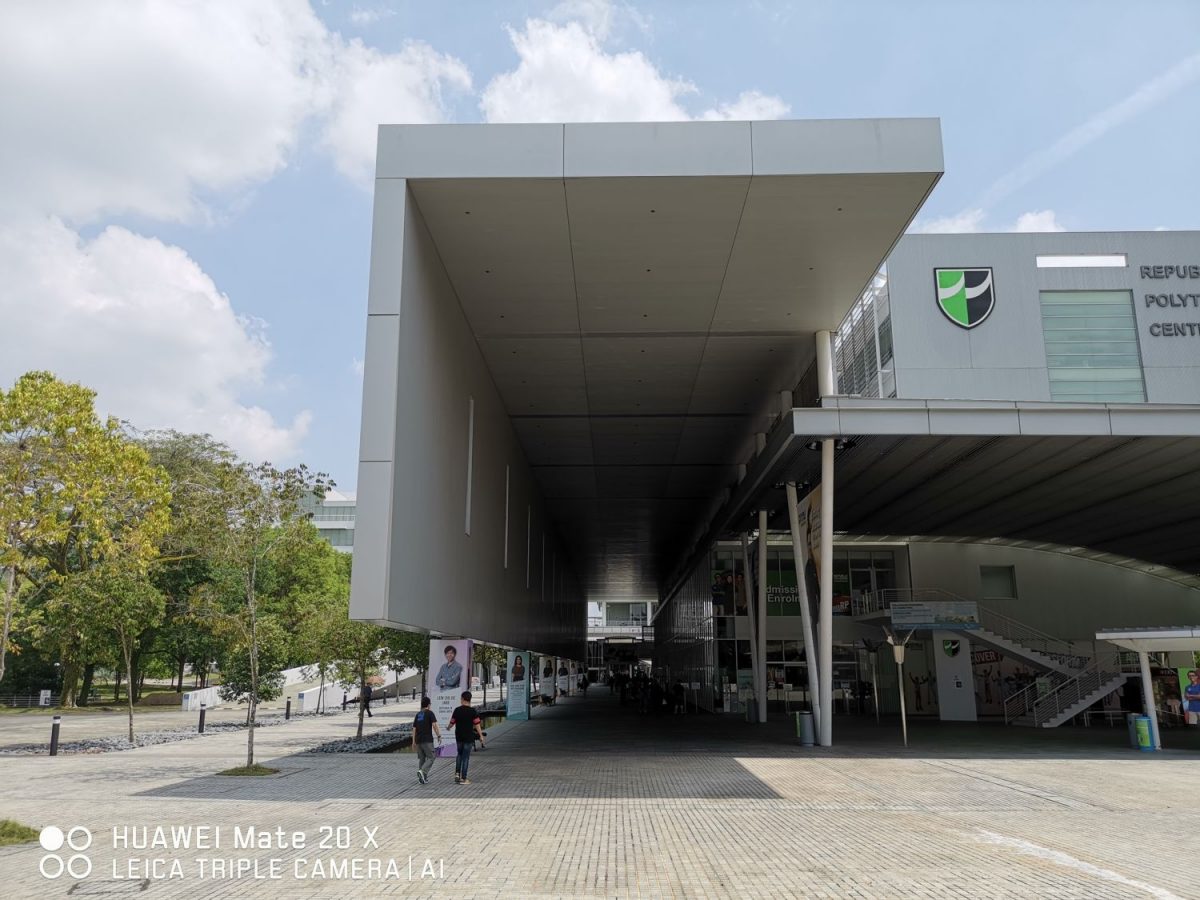
Huawei Mate 20 X (x1 normal)
Huawei Mate 20 X (x3 zoom)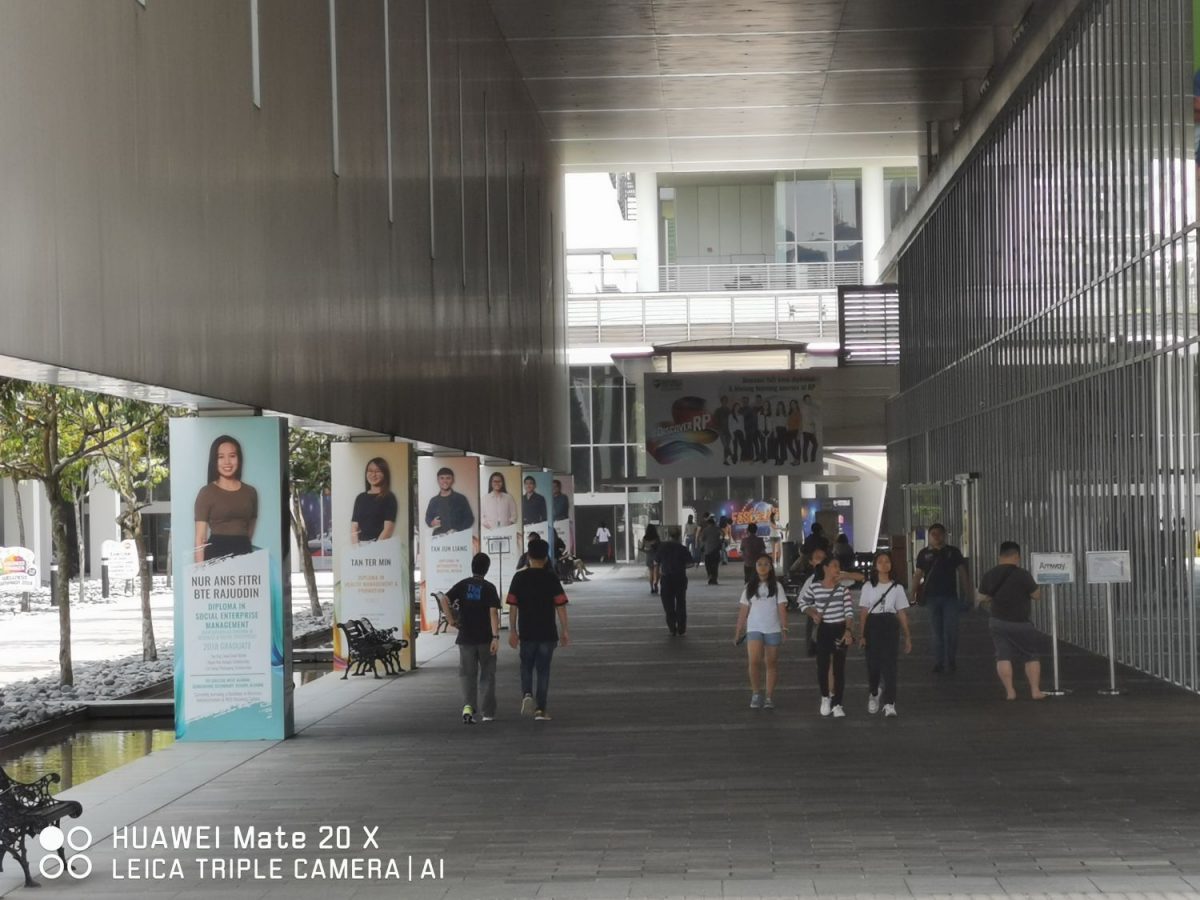
Huawei Mate 20 X (x5 zoom)
This is the equivalent of a 16-80mm coverage on a normal camera. There are 4 images here taken with the Mate 20 X, one at x0.6 (ultrawide), x1 (normal), x3 (zoom) and x5 (more zoom), and two taken with the iPhone at x1 and x2 focal lengths.
The ability to have all this variety in one device makes a huge difference in the types of images one can capture with the camera phone they have with them.
WINNER: Huawei Mate 20 X… by a longshot
12: Shadows and Highlights
Night mode is not only for shooting at night. Oftentimes, when there is a large contrast in the scene, the night mode can add the dynamic range to allow the photographer to capture details in both the highlights and the shadows. The iPhone uses their standard lens with no night mode while the Mate 20 X combines the ultrawide 16mm lens to show you more of the scene.
Coupled with the night mode function, the Mate 20 X avoids blown out patches in outdoor areas, as well as brings out shadow details. And the wide angle also allows you to see the student walking along the corridor, which gives a sense of scale to the photograph.
WINNER: Huawei Mate 20 X
13: Skating in the Park
Sometimes, you just can’t go back any further. The ultrawide is a formidable tool in any photograher’s arsenal of lenses, and when used correctly can add that extra bit of environment to a picture to give the viewer a better sense of place. This allows the photographer to get in closer than ever, to make a picture that allows the viewer to feel like they are a part of the picture instead of being an outsider looking in.
Winner: Huawei Mate 20 X
Summary
Once the gold standard in smartphone photography, the iPhone is far from being a has been, but it has been looking a bit long in the tooth lately, especially when compared to the latest offerings by Huawei and other Android manufacturers.
The P10 Pro was an interesting test into the market of multi-lens camera phones with its monochrome sensor, but the revolution really kicked off with the triple camera system introduced in last year’s P20 Pro. The Mate 20 Pro and X made an even more impressive system with the inclusion of the UltraWide angle lens, and we’re very interested in seeing what Huawei’s new P30 series of phone cameras will bring to the table when they make their debut next week in Paris.
Apple will no doubt have some tricks up its sleeves with the next iteration of the iPhone, most likely due out at the end of the third quarter of 2019, but they really are facing an uphill battle to regain the lead from these next generation Android phones.



